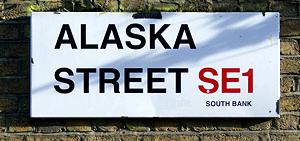1861
For some reason the Moore family moved to the other side of the
road. They moved from 26 John Street to 27 John Street. This
decision had a very dramatic effect on the future occupations of
the males of the Moore family for the next 140 years.
They
shared this new house with two young families. The Giggs and
Cooper families who were both Printers. Joel Moore senior
is now 45. His namesake son Joel (junior) is now 14 and working
as a Printer. He is the first member of the Moore family to work
‘in the print’. The centre of London’s print trade in Fleet
Street is only a short walk from his home in John Street. Joel
(junior) would have walked across Blackfriars Bridge, over the river
Thames, to get to the north bank and the City of London, the
financial centre of Queen Victoria’s British Empire.
On the 1861 census Joel Moore
senior’s occupation has changed. It is recorded as a being a
labourer
but in later census records he is still shown as a coal
porter. Mary Moore is missing from the census record so
presumably she has married and left home. Young Sarah Moore
would have been aged 13 in 1861. She is missing from this census
record. It is reasonable to surmise that she died from a
childhood disease but may have been sent to work as a servant in
a big house.
In 1861 James Moore is shown as aged 23 and still
living at home. William is
now 12 and a new boy Charles Moore is recorded as being born in 1853. He is
now aged 8 and
is very important to our story as he is the next direct
descendant of the Moore’s. A 62 year old lady called Elizabeth Havlett is also shown living at the house as a boarder,
a lodger.
 John Street was
renamed in 1880 and called Alaska Street. It is still there but
there are no longer any houses in the street. The high level
Waterloo East Railway Station is built on the south
side of the road. The track crosses the road midway on a bridge
as it heads towards Charing Cross Railway Station on the north
bank of the River Thames. Most of the houses that were not
demolished to make way for the Railway were later damaged beyond
repair in the Nazi bombing of London during World War Two. John Street was
renamed in 1880 and called Alaska Street. It is still there but
there are no longer any houses in the street. The high level
Waterloo East Railway Station is built on the south
side of the road. The track crosses the road midway on a bridge
as it heads towards Charing Cross Railway Station on the north
bank of the River Thames. Most of the houses that were not
demolished to make way for the Railway were later damaged beyond
repair in the Nazi bombing of London during World War Two.
The next few roads along were not touched by
the bombing and are now highly sought after properties that cost nearly one million pounds each. These are small Georgian
workers cottages but because they are so near central London
they are highly prized. They have all been restored. The area is
opposite the main entrance to Waterloo Station behind St John's
Church by the big roundabout on the south side of Waterloo
bridge. The area is one of London's hidden gems. It is like
walking back in time, around London 170 years ago. The houses in
John Street (Alaska Street) were built in the same style so by
looking at these houses you can imagine what John / Alaska
Street used to look like. These small back to back
terraced cottages housed three families in very cramped
conditions. |

